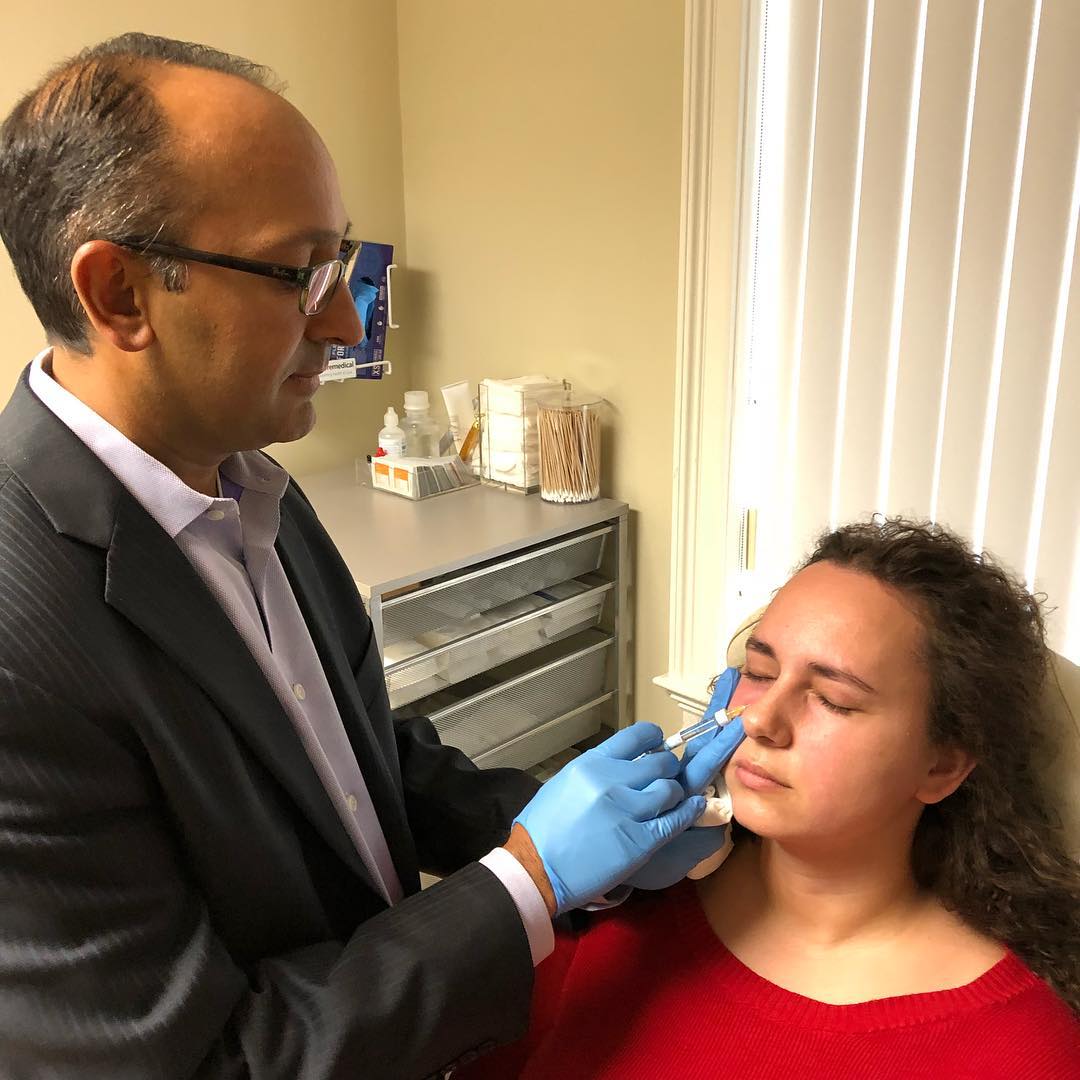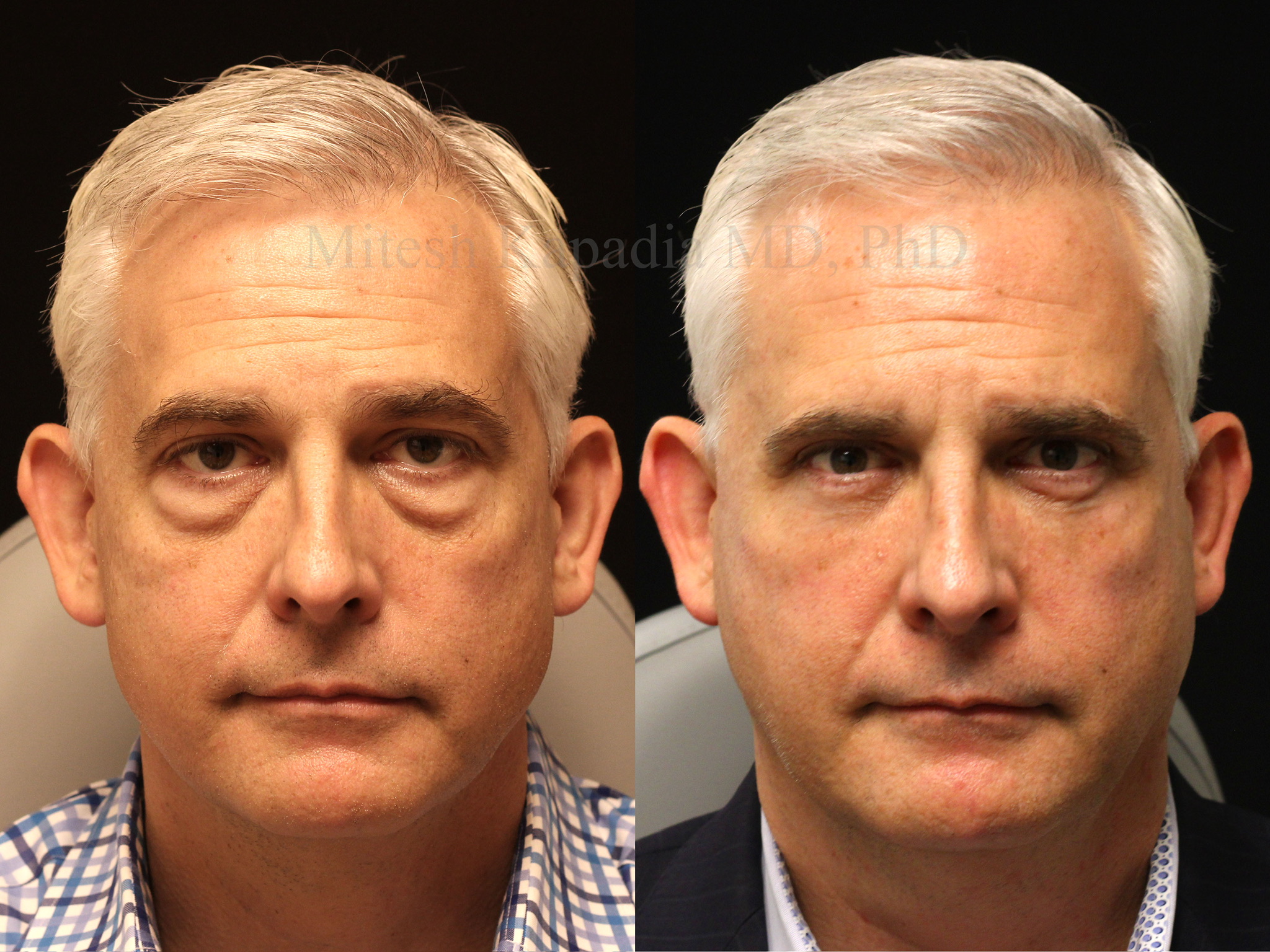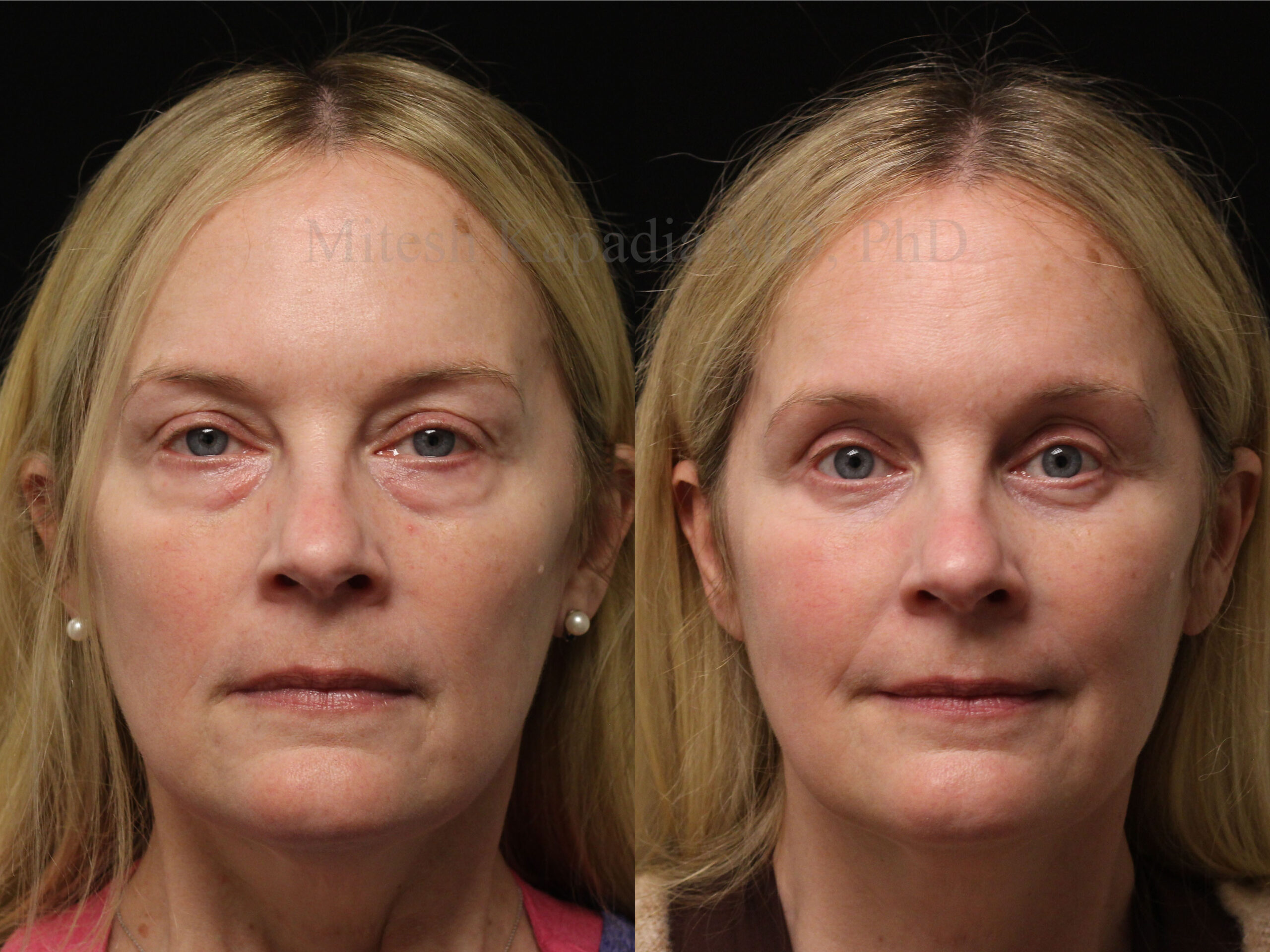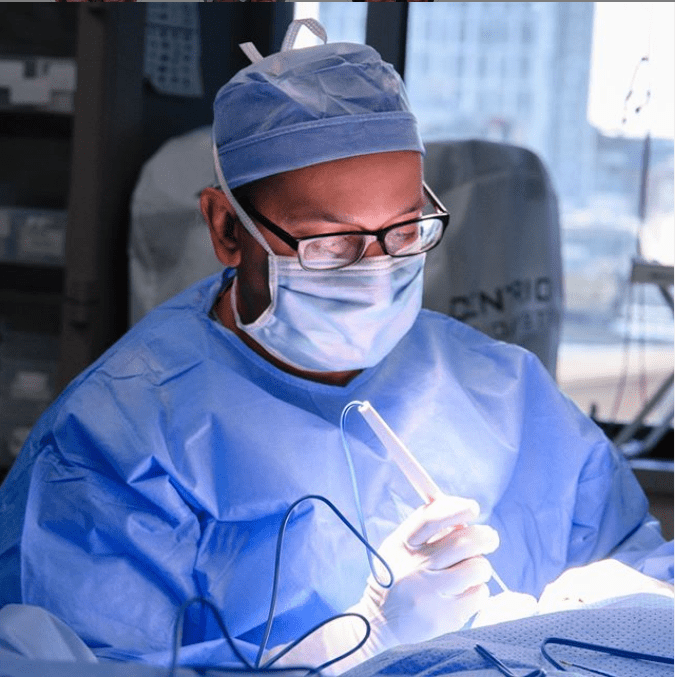Author
Mikayla Vosseller
Share
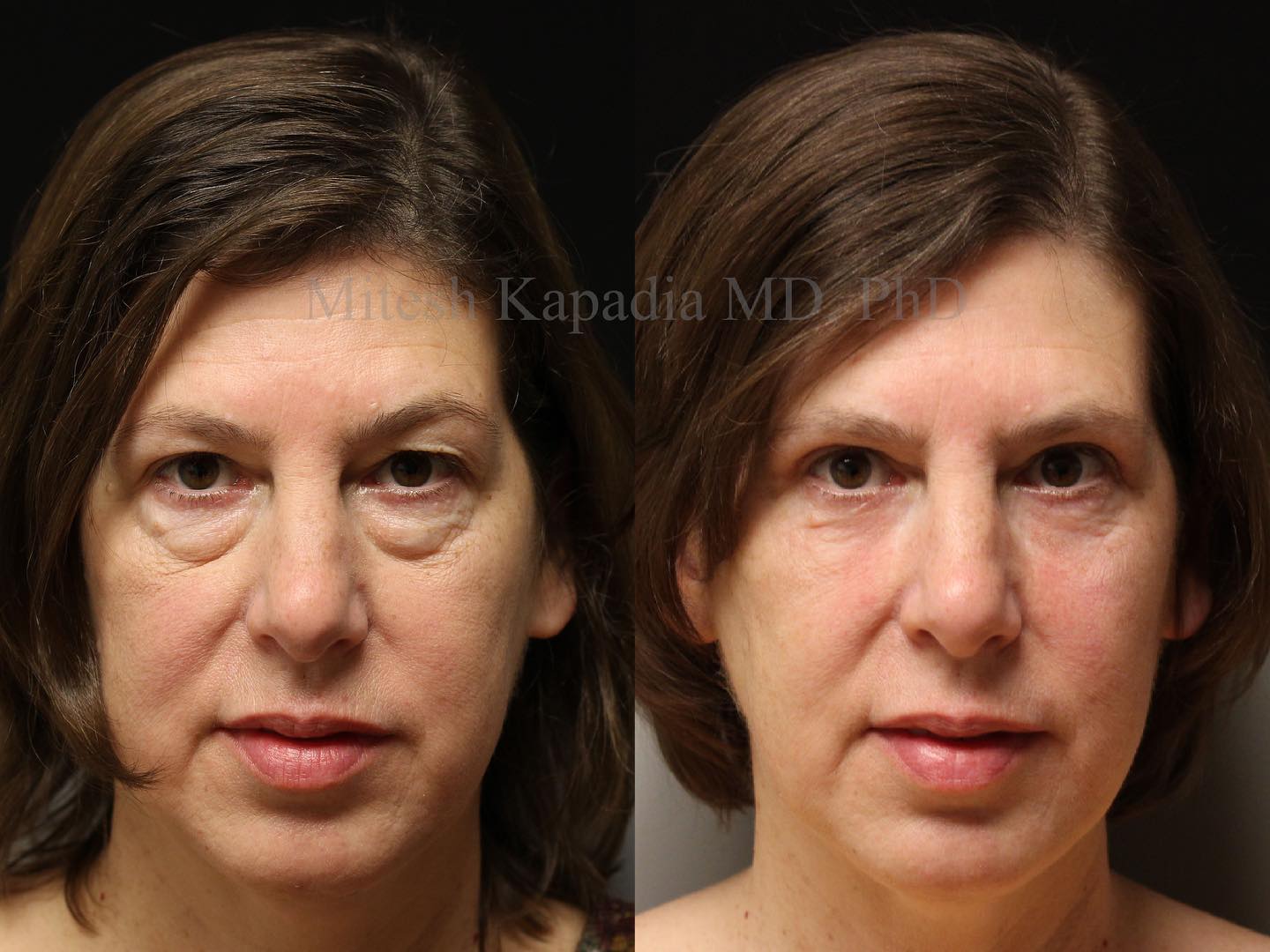
Patients who have bags under their eyes often wonder if they are best treated with filler injections or lower eyelid surgery (lower blepharoplasty surgery). Nothing can take the place of an in-person consultation, but this post is meant to help patients understand their options.
What causes bags under the eyes?
Bags under the eyes are usually caused by excess fatty tissue in the lower eyelids. Everyone has fat in the eye socket, which can help cushion the eyes against impact. When too much fat moves forward into the lower eyelids it causes a bulge in the lower eyelids forming an under eye bag.
What options exist to treat lower eyelid bags?
The only way to remove fat from the lower eyelids is with lower blepharoplasty surgery. The surgery can be done through an incision under the eyelashes (external lower blepharoplasty), or through a hidden incision on the back of the eyelid (transconjunctival lower blepharoplasty). In either approach, the surgeon exposes the pockets of fat in the lower eyelids and carefully removes excess tissue. Lower eyelid surgery is the procedure of choice when the main problem is having too much fat in the lower eyelids. Before and after photos of lower blepharoplasty surgery are shown here: While surgery is the only way to remove fat, under eye bags can sometimes be camouflaged using injectable fillers such as Restylane. The goal of this procedure is to build up the tissue around the bag to make it less noticeable. In patients who have only a mild amount of excess fatty tissue in the lower eyelids camouflaging the bags is often a great solution. In patients who have very thin cheeks, even normal amounts of fat in the lower eyelids can look like a bag. Adding volume to the upper cheeks can help produce a healthier, less tired appearance. Filler injections work best in patients in their 20s, 30s and 40s, but older patients can sometimes benefit as well. Before and after photos of lower eyelid filler injections are shown here: An in-person consultation is needed to see which treatment will work best for you. Filler injections can usually be performed on the same day as the consultation. There can be significant bruising and swelling afterward, but most patients feel comfortable returning to work within a week after the injections. Surgery usually takes 4-6 weeks to schedule. Dr. Kapadia recommends that patients take two weeks off of work for eyelid surgery.

